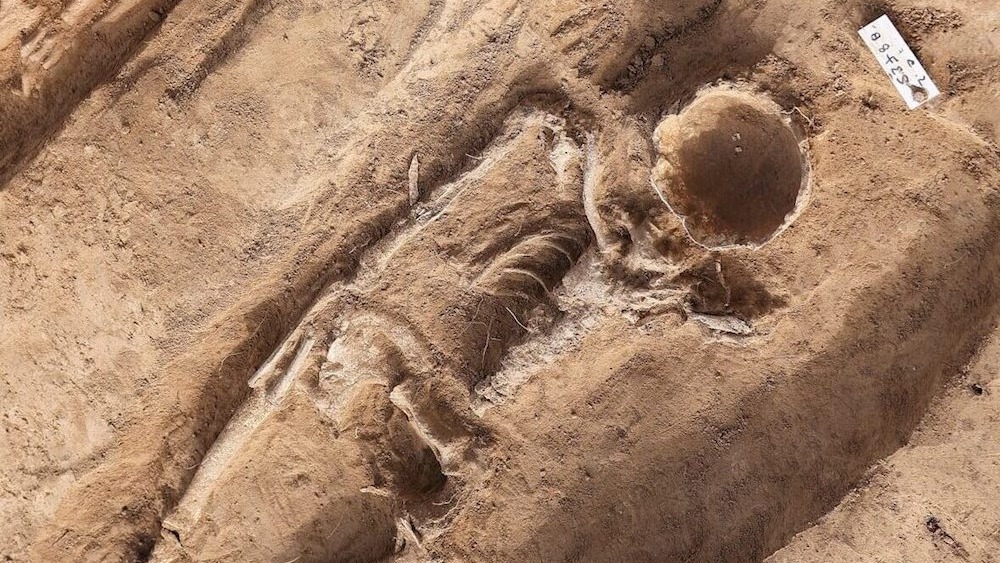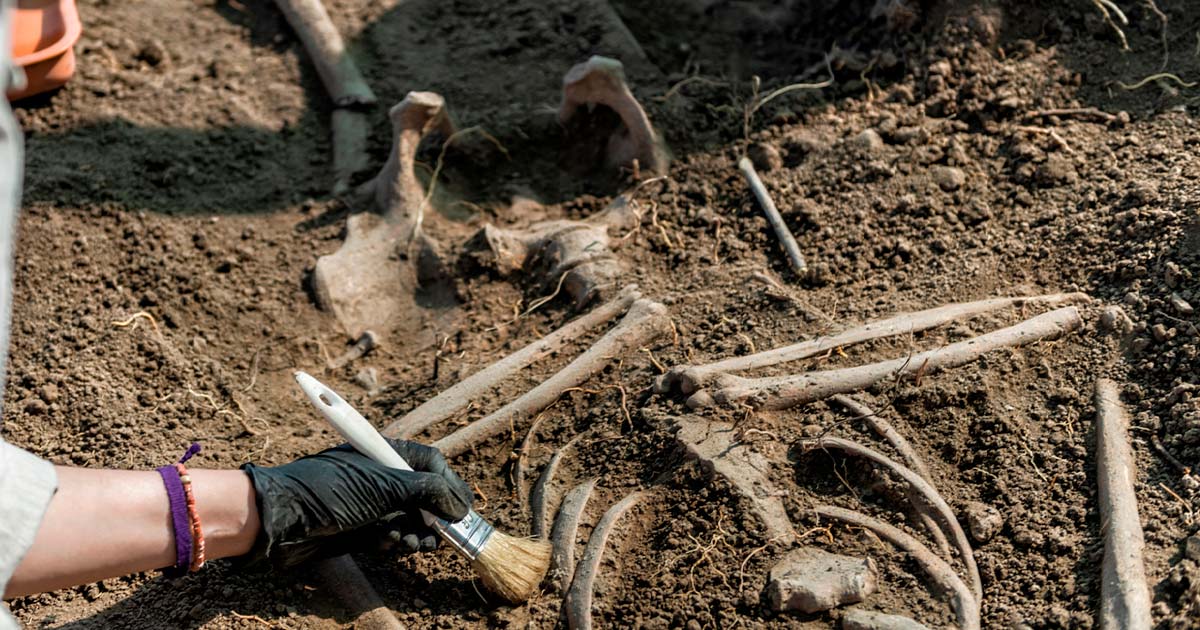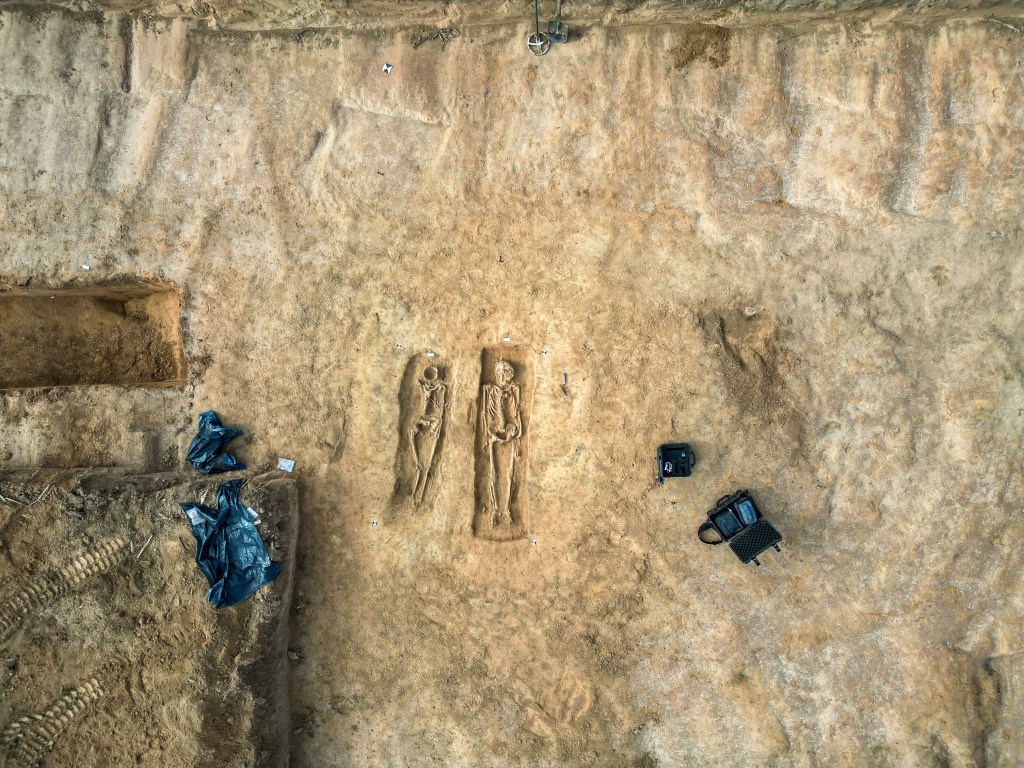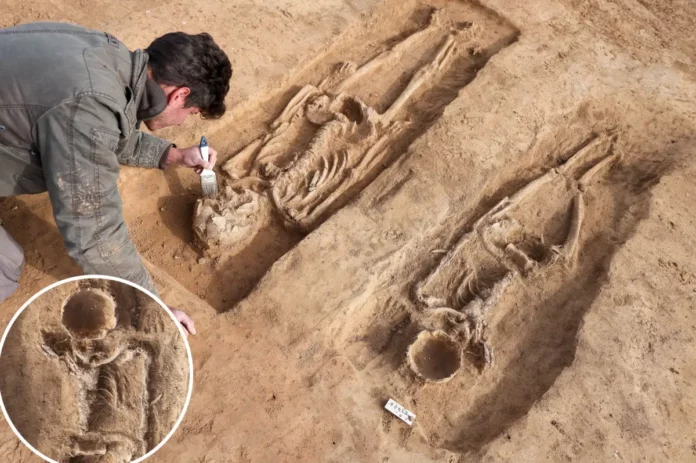While conducting excavations at the site of an ancient imperial palace in the village of Eisleben, Germany, archaeologists made a remarkable discovery. They unearthed the ruins of castle fortifications and stumbled upon the remains of an elite couple dating back 1,000 years. However, what astounded the researchers even further was the absence of facial bones in the woman’s skeleton, a mysterious and intriguing find.
Elite Graves Highlight Aristocratic Power Structure in Ancient Helfta
Archaeologists uncovered two graves in the recently discovered cemetery, which have been determined to belong to the Carolingian period. These graves contained the buried bodies of a man and a woman, presumed to be a married couple who lived during the 9th century, according to Felix Biermann, the project leader from the Saxony-Anhalt State Office for the Preservation of Monuments and Archaeology.

The burial of the woman was particularly notable and puzzling. Her facial bones were completely missing, and since the grave showed no signs of disturbance, it suggests that she was buried in this condition. While speculation remains, one possibility is that the missing bones were damaged due to a fatal accident. The man, buried alongside remarkable iron grave goods, including a knife, a belt set, and part of a staff of office, denotes a higher social status.
Biermann theorized that the man may have held a socially higher-ranking position due to the presence of these grave goods. Considering the proximity of the graves to the medieval castle and the assortment of burial items, the archaeologists believe that the couple enjoyed great wealth and held a prominent status. These discoveries add to the significance of a nearby elite medieval cemetery unearthed in 2021, which contained approximately 70 elaborate burials.

Fortified Imperial Palace Reveals Rich History
During the excavation, the archaeologists also uncovered the remains of a fortified royal castle, used for defensive purposes. Additionally, they found evidence of pit houses and a separate royal structure built over the original palace during the 12th century. Biermann stated that the outer castles of the fortified imperial palace revealed signs of dense settlement with numerous pit houses.

These extensive ruins provide valuable insights into the infrastructure of the imperial palace and the living conditions of ordinary people who contributed to the Carolingian-Ottonian center of power. The discoveries indicate a relatively large population residing near the royal palace over 1,000 years ago. This ongoing excavation continues to unravel the mysteries of Helfta’s past and shed light on the cultural and social dynamics of the time.

Otto the Great and the Legacy of Helfta
One prominent figure from the era when the medieval palace and surrounding settlement were constructed was Otto I, also known as Otto the Great and the founder of the Ottonian dynasty. He served as the Holy Roman Emperor from 962 to 973 and is known to have resided in the Helfta palace at least part of the time. In 2021, archaeologists discovered the buried foundation walls of an ancient Catholic church, which was later identified as a grand cathedral commissioned by Otto I. The monumental church serves as a testament to Otto’s devotion to the Catholic faith. Interestingly, it was built in Eisleben, the birthplace of the renowned Protestant reformer Martin Luther.

Excavations at the site have also revealed various residential and commercial buildings, opulent homes for the wealthy, and an auditorium where gatherings and public events likely took place. Many of these structures date back to the period of Otto the Great’s reign, continuing the tradition of consolidated rule under German control that began with the Carolingian dynasty in the 9th century.
The recent discovery of the 1,000-year-old skeleton couple, with the woman missing her facial bones, sheds light on the aristocratic power structure in ancient Helfta. The unearthing of the fortified imperial palace and its surrounding structures provides valuable insights into the lives of both the elite and the common people of that time. Ongoing excavations will continue to explore the rich history of Helfta, offering a deeper understanding of the cultural, social, and religious aspects of this remarkable period.
